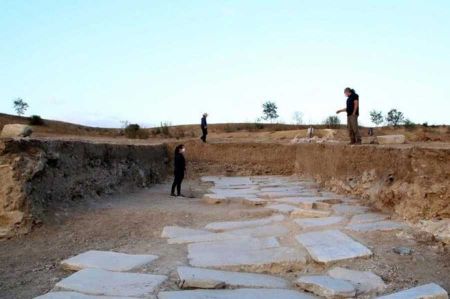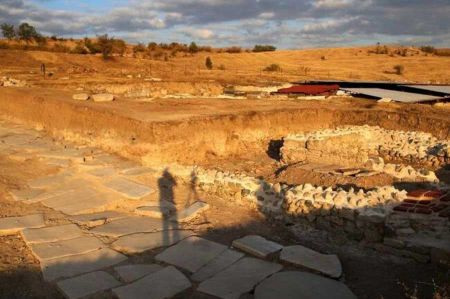Pompeiopolis - discovered ancient Roman road?
- Written by Portal Editor
Pompeiopolis, sometimes also written Pompeioupolis, was an ancient city in the Paphlagonia region of Asia Minor in the north of today's Turkey.
The remains of the ancient city lie on a hill near today's Taşköprü on the southern bank of the Gökırmak river (the ancient name was "Amnias") on a road connection from western Asia Minor to Armenia. It was founded by the Roman general Gnaeus Pompeius Magnus during his war against Mithridates VI. of Pontos in the year 64/63 BC. Apparently Pompey settled Romans in the city named after him, as the names of residents and the use of the Roman calendar show. Pompeiopolis was initially part of the province of Bithynia et Pontus and was founded by Mark Antony in 39 BC subordinated to Galatian clientele rulers. Under Augustus Pompeiopolis was re-incorporated into the Roman Empire and was the capital of the government (conventus) of Paphlagonia, which now belonged to the Roman province of Galatia. On the basis of inscriptions on coins, it was partly assumed that the city had temporarily borne the name Sebaste in the late 2nd century AD; however, this assumption is based on a wrong reading and interpretation of the corresponding legends.
Families from Pompeiopolos rise in the imperial aristocracy

In late antiquity, Pompeiopolis was the seat of a bishop, an archbishop from the 6th century and a metropolitan from the 11th century. The titular archbishopric Pompeiopolis in Paphlagonia of the Roman Catholic Church emerged from the diocese. In the Middle Byzantine period, the Amnias valley was part of the Armeniacon theme in the 8th century and then belonged to the newly founded Paphlagonia theme since the early 9th century. The city is no longer mentioned in the written sources of the time; just in 1390 again, when the later emperor Manuel II Palaiologos passed the area and described the city as abandoned and destroyed in a letter.
Between 2006 and 2016, Pompeiopolis was researched by a research team led by Lâtife Summerer, until 2012 as part of a research project at the Ludwig Maximilians University in Munich. On the basis of the geophysical prospection, several buildings and areas could be identified and partially excavated, including the theater, parts of the agora, and a late antique house with elaborate floor mosaics. A round building originally interpreted as the tholos of a macellum has turned out to be a martyrdom.
The historic road should be accessible again after 1800 years
Further excavations near the city of Pompeiopolis, almost leading to the Black Sea, have now unearthed the remains of an old road system to the ancient city of Pompeiopolis, which is soon to be made accessible to tourists. Today the ruins and remains of the historic city still lie on the southern bank of the Gökirmak river near Tasköprü.
During wartime the ancient city was taken over by the Roman general Gnaeus Pompeius Magnus. The region's approximately two-thousand-year-old road is now to be made accessible again to interested visitors, although excavations are still being carried out in Pompeiopolis.
Coordinates: 41 ° 31 'N, 34 ° 13' E
Please read as well:
The Pliny Canal - an ancient canal project
Roman Games - parlor games were particularly popular
